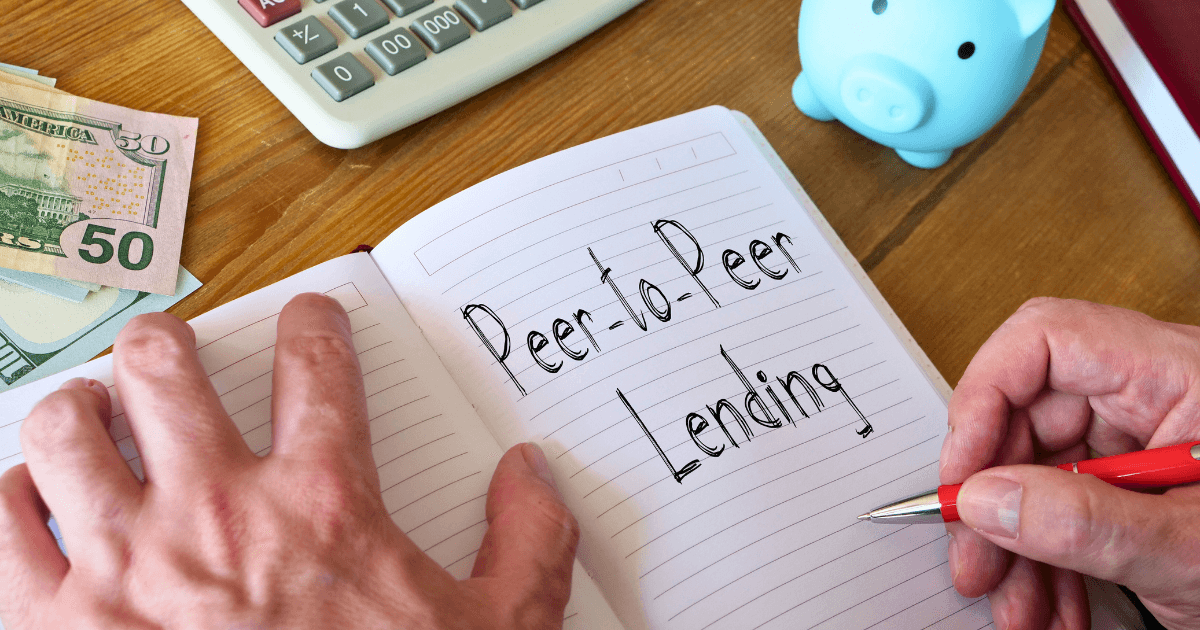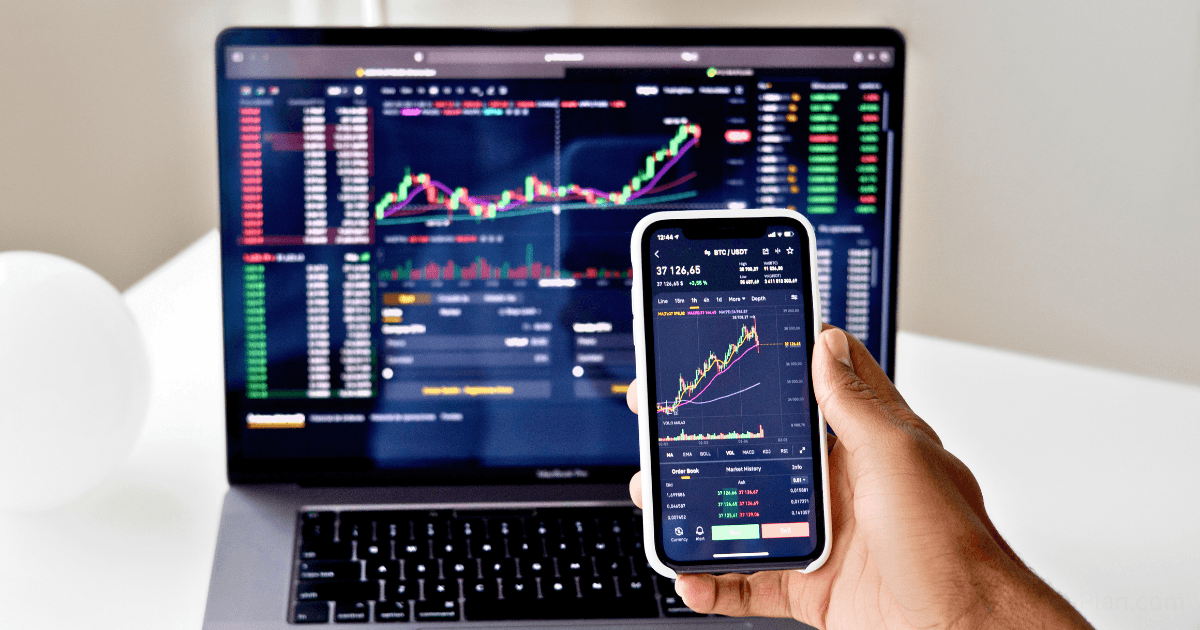P2P Lending Experience: My Returns, Defaults, and Lessons From Investing $10,000

When I first discovered peer-to-peer lending, the concept seemed almost too good to be true: cut out the banks, connect directly with borrowers, and pocket returns that dwarfed what traditional fixed-income investments offered. The promise of 8-15% annual returns with monthly cash flow was enticing enough for me to commit $10,000 to this alternative investment strategy.
Eighteen months later, my experience has been eye-opening—filled with successes, failures, and invaluable lessons about this rapidly growing asset class. With the global P2P lending market projected to reach a staggering $1 trillion by 2025, understanding the reality behind the marketing promises has never been more important.
This isn’t a theoretical overview—it’s a raw, data-driven account of my personal journey into the world of P2P lending, complete with actual returns, default rates, and the psychological insights I’ve gained along the way.
The Investment Strategy: How I Deployed $10,000
Before diving into results, let me share exactly how I structured my P2P lending experiment:
Platform Selection and Allocation
After extensive research, I split my $10,000 investment across three leading platforms to diversify platform risk:
- LendingClub: $5,000 (50%)
- Prosper: $3,000 (30%)
- Peerform: $2,000 (20%)
Loan Selection Criteria
Rather than chase the highest interest rates, I developed a balanced approach:
- Risk Grades: 60% in B-C grade loans, 20% in A grade, 20% in D-E grade
- Loan Purpose: Prioritized debt consolidation and credit card refinancing
- Loan Term: 70% in 36-month loans, 30% in 60-month loans
- Maximum Exposure: No more than $25 per individual loan
Automation vs. Manual Selection
I used a hybrid approach:
- 70% of capital deployed using automated investing tools with my preset criteria
- 30% manually selected after reviewing individual loan applications
The Raw Results: Returns and Defaults After 18 Months
Overall Performance
After 18 months of investing, here’s the unvarnished truth about my P2P lending returns:
- Initial Investment: $10,000
- Total Interest Received: $1,357
- Defaults and Charge-offs: $683
- Platform Fees: $124
- Net Return: $550 (5.5% annualized)
While the 5.5% annualized return exceeded what I could have earned in CDs or bonds, it fell significantly short of the 8-11% returns advertised by the platforms. This aligns with findings from P2P Empire, which notes that actual P2P returns have dropped nearly 3% compared to previous years.
Platform-Specific Performance
The results varied considerably by platform:
LendingClub ($5,000)
- Annualized Return: 4.8%
- Default Rate: 7.2%
- Notes in Late Status: 3.5%
Prosper ($3,000)
- Annualized Return: 6.4%
- Default Rate: 5.9%
- Notes in Late Status: 2.8%
Peerform ($2,000)
- Annualized Return: 5.9%
- Default Rate: 6.7%
- Notes in Late Status: 4.1%
Performance by Loan Grade
The performance across different risk grades revealed some counterintuitive insights:
| Loan Grade | Expected Return | Actual Return | Default Rate |
| A | 5-7% | 4.9% | 2.1% |
| B | 7-9% | 6.2% | 4.8% |
| C | 9-11% | 5.7% | 8.3% |
| D | 11-14% | 6.8% | 9.7% |
| E | 14-17% | 3.2% | 15.4% |
The most surprising finding was that D-grade loans actually outperformed C-grade loans in my portfolio, while E-grade loans significantly underperformed expectations due to higher-than-anticipated defaults.
The Default Pattern: When and Why Borrowers Stopped Paying
One of the most educational aspects of this experiment was tracking when and why defaults occurred:
Default Timing
- Month 1-3: 8% of total defaults
- Month 4-6: 14% of total defaults
- Month 7-12: 43% of total defaults
- Month 13-18: 35% of total defaults
The data showed a clear “default curve” that peaked between months 7-12, suggesting that many borrowers maintained payments just long enough to establish a pattern before defaulting—a phenomenon sometimes called “strategic default.”
Default Reasons (Based on Available Information)
- Job loss/Income reduction: 41%
- Medical emergencies: 23%
- Bankruptcy filing: 17%
- No reason provided: 19%
This pattern aligns with research from Medium, which highlighted increased 60+-day defaults at several large online lenders in recent years.
The Psychology of P2P Lending: What I Learned About Myself
Perhaps the most valuable insights came not from the numbers, but from observing my own psychological responses throughout this journey:
The Overconfidence Bias
When I began investing in P2P loans, I was convinced that my selection criteria would outperform the averages. I believed I could identify “good borrowers” better than others, despite having no background in credit analysis. This overconfidence is common among P2P investors, as noted in Financial Mentor’s analysis, which found many lenders don’t invest enough to distinguish between luck and skill in returns.
The Emotional Rollercoaster
My emotional response to defaults evolved over time:
- First Default: Shock and personal disappointment
- Early Defaults: Frustration and questioning of the platform
- Later Defaults: Acceptance as a cost of doing business
This emotional journey taught me that successful P2P investing requires detachment from individual loan outcomes and a focus on portfolio-level performance.
The Illiquidity Reality Check
Despite understanding intellectually that P2P loans are relatively illiquid, I underestimated how this would affect my psychology. When I wanted to access some capital for another opportunity, I discovered that selling notes on the secondary market often required accepting significant discounts—sometimes 5-15% below par value. This illiquidity premium was higher than I had anticipated.
Five Strategic Adjustments That Improved My Returns
After the first six months of mediocre performance, I implemented several changes that noticeably improved my returns in the subsequent year:
1. Narrowed Borrower Selection Criteria
I refined my automated filters to focus on borrowers with:
- Debt-to-income ratios under 30%
- At least 3 years of credit history
- No recent inquiries in the past 6 months
- Homeownership (which correlated with lower default rates in my portfolio)
2. Implemented “Seasoning” Strategy
Rather than immediately reinvesting returned principal and interest, I began purchasing loans on the secondary market that had already made 6+ months of on-time payments. This strategy helped me avoid the early default window, though it slightly reduced interest returns.
3. Increased Diversification
I reduced my maximum exposure per loan from $25 to $15, allowing me to spread my capital across more loans. This significantly reduced the impact of individual defaults on my overall portfolio performance.
4. Focused on Specific Loan Purposes
After analyzing my default data, I shifted away from small business loans (which had higher default rates in my portfolio) and increased allocation to credit card consolidation loans, which performed better than average.
5. Implemented a Rapid Reinvestment Protocol
I created a system to reinvest returned principal within 48 hours, reducing cash drag. This seemingly small change added approximately 0.3% to my annual returns by keeping more capital deployed.
The Wealth-Building Perspective: P2P’s Role in a Broader Portfolio
As someone focused on building long-term wealth, I’ve had to honestly evaluate P2P lending’s place in my overall financial strategy:
P2P Lending’s Advantages
- Monthly Cash Flow: Unlike many investments, P2P provides regular monthly income that can be reinvested or used for expenses.
- Low Correlation: My P2P returns showed minimal correlation with stock market movements, providing genuine diversification.
- Inflation Protection: The relatively short duration of loans (3-5 years) and higher interest rates provided some inflation protection compared to traditional bonds.
P2P Lending’s Limitations
- Scale Constraints: The time required to properly manage a P2P portfolio doesn’t scale efficiently. Managing $10,000 takes nearly as much time as managing $100,000.
- Tax Inefficiency: Interest income is taxed at ordinary income rates rather than the preferential capital gains rates, reducing after-tax returns.
- Platform Risk: The financial health of P2P platforms themselves remains a concern, with many still struggling to achieve consistent profitability.
Practical Recommendations: Should You Invest in P2P Lending?
Based on my experience, here are my recommendations for different investor profiles:
For New Investors
Recommendation: Approach with caution, limiting P2P to no more than 5% of your portfolio.
Start with a small amount ($1,000-2,000) spread across at least 80-100 loans to understand the mechanics and psychology before committing more capital. This aligns with Reddit discussions suggesting a conservative allocation of 3-5% of one’s overall investment portfolio.
For Experienced Investors
Recommendation: Consider a 5-10% allocation if you have:
- A high risk tolerance
- No near-term liquidity needs
- The discipline to reinvest consistently
- The time to actively manage your loan selections
For Wealth-Builders
Recommendation: Use P2P strategically for specific goals:
- As part of a passive income stream
- For portfolio diversification
- In tax-advantaged accounts when possible to mitigate the tax inefficiency
Future Outlook: Where P2P Lending Is Headed
The P2P lending landscape continues to evolve rapidly. Here are the trends I’m watching closely:
Institutional Dominance
Institutional investors now fund the majority of loans on many platforms, changing the competitive dynamics for individual investors. This trend is likely to continue, potentially squeezing returns for retail investors.
Regulatory Evolution
Increased regulatory scrutiny is inevitable as the industry grows. As Medium notes, P2P sites in the United States must navigate SEC scrutiny over debt offerings that could be considered securities.
Technology Integration
Advanced AI and machine learning algorithms are improving credit models, which may reduce default rates over time but could also further advantage institutional investors with access to sophisticated tools.
Conclusion: The Unvarnished Truth About P2P Lending
After 18 months and $10,000 invested, my P2P lending experiment has yielded moderate financial returns but invaluable educational dividends. The 5.5% annualized return falls short of the marketing promises but still exceeds most traditional fixed-income options in the current environment.
The most important lesson I’ve learned is that P2P lending is neither a get-rich-quick scheme nor a scam—it’s a legitimate alternative investment class that requires proper expectations, diligent management, and psychological discipline. The returns are real, but so are the risks and time commitments.
For those building wealth, P2P lending can serve as one component of a diversified portfolio, particularly for generating monthly cash flow. However, it should complement rather than replace core investment strategies like index investing, real estate, or business ownership.
The true value of my P2P experiment extends beyond the dollars earned—it’s provided a masterclass in credit analysis, risk management, and my own investing psychology. These lessons will serve me well across all aspects of my wealth-building journey, regardless of how my P2P portfolio performs in the years ahead.
Have you invested in P2P lending? What has your experience been with returns and defaults? Share your insights in the comments below.






